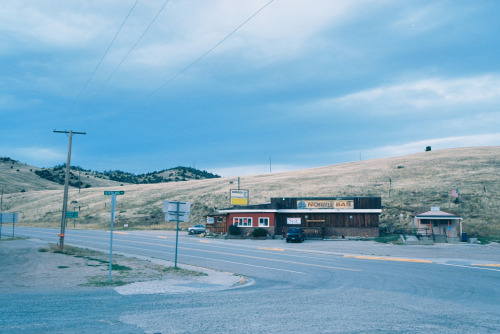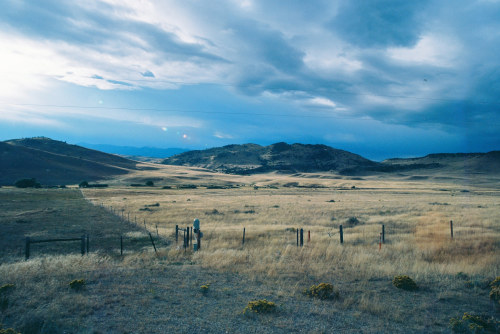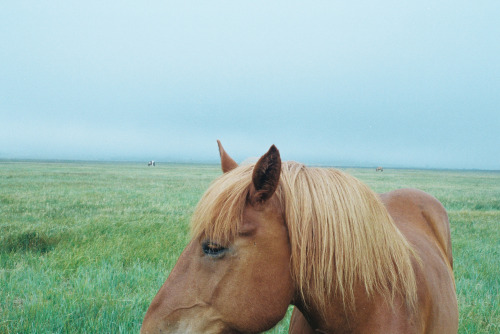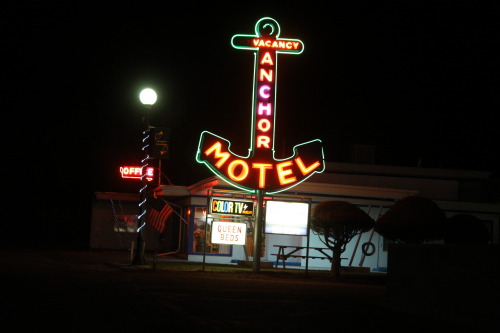#the west
The Wild Bunch (1969)
Dir: Sam Peckinpah
DOP: Lucien Ballard
“I don’t know a damn thing, except I either lead this bunch, or end it right now!”
Post link
Grand Teton National Park, July 2016
Canon EOS Rebel Ti : Sigma 24-60mm // Ektar 100
@paraxellum instagram: @satanclit
Post link
While we’re swinging for the fences, here’s Lewis Lapham pondering the unfathomable immensity of the cosmos: “Isn’t that kind of the fun, the looking into the vast darkness ripe with wonders that will never cease? The limitless expanse of human ignorance … rouses out the love of learning, kindles the signal fires of the imagination. We have no other light with which to see and maybe to recognize ourselves as human … To bury the humanities in tombs of precious marble is to deny ourselves the pleasure that is the love of learning and the play of the imagination, and to cheat ourselves of the inheritance alluded to in Goethe’s observation that he who cannot draw on three thousand years is living hand to mouth. Technology is the so arranging of the world that it is the thing that thinks and the man who is reduced to the state of a thing. Machine-made consciousness, man content to serve as an obliging cog, is unable to connect the past to the present, the present to the past. The failure to do so breeds delusions of omniscience and omnipotence.”
This and more in today’s culture roundup.
(Image Credit: Autopsy of the First Crocodile, Onboard, Upper Egypt, by Ernest Benecke)
Post link
It’s not just that the concept of Western civilization is bankrupt, racist bullshit … it’s that it’s much fresher bullshit than you might think. Kwame Anthony Appiah provides an excellent primer: “European and American debates today about whether Western culture is fundamentally Christian inherit a genealogy in which Christendom is replaced by Europe and then by the idea of the West … If the notion of Christendom was an artifact of a prolonged military struggle against Muslim forces, our modern concept of Western culture largely took its present shape during the Cold War. In the chill of battle, we forged a grand narrative about Athenian democracy, the Magna Carta, Copernican revolution, and so on. Plato to Nato. Western culture was, at its core, individualistic and democratic and liberty-minded and tolerant and progressive and rational and scientific. Never mind that premodern Europe was none of these things, and that until the past century democracy was the exception in Europe—something that few stalwarts of Western thought had anything good to say about. The idea that tolerance was constitutive of something called Western culture would have surprised Edward Burnett Tylor, who, as a Quaker, had been barred from attending England’s great universities. To be blunt: if Western culture were real, we wouldn’t spend so much time talking it up.”
This and more in today’s culture roundup.
(Image Credit: The Plumb Pudding in Danger, James Gillray)
Post link
Chabon, Lethem, Eggers, Saunders, Whitehead: the literary luminaries of the nineties made their names on a fantastical escapism, more determined to entertain than they were to provoke. Now that the world’s gone even more to shit, Sam Sacks wonders if their appeal has worn thin: “the central dilemma of the nostalgist’s aesthetic: Can a novelist both recapture the innocent pleasures of storytelling and at the same time illuminate the complex realities of experience? In stable and prosperous times, truth and entertainment can overlap. But periods of crisis wedge them apart, and being faithful to one compromises the other … I find myself missing ambivalence—a quality that rarely squares with entertainment. There must be precious few readers who don’t already feel well disposed to tales of World War II heroes, fugitive slaves, and Abraham Lincoln.”
This and more in today’s culture roundup.
(Ilustration: Nathan Fox)
Post link
Literature loves a hoax—the Daily itself may have perpetrated one as recently as yesterday, though you didn’t hear it from me. Clifford Irving, who’s responsible for one of the great written ruses of the past fifty years, isn’t given the credit he deserves as a creative liar. Paul Elie tells his story: “Irving, while living in Ibiza in 1971, concocted a bogus autobiography of Howard Hughes, the reclusive billionaire tycoon. Irving, a Manhattan-born author of three novels that had sold poorly, saw it as a low-risk, high-adrenaline stunt, a kick at the pricks of New York literary society. It was the kind of thing a writer could try and hope to get away with in the days before the Internet laid all—or most—fraudsters bare. That ‘stunt’ turned Irving into the Leif Erikson of literary hoaxsters. (The forged Hitler Diaries would not appear until the 1980s.) Irving got advances upward of $750,000 from McGraw-Hill; fooled the publisher, handwriting experts, and Life magazine’s editors; and stirred the publicity-loathing Hughes to comment—all of which seems to surprise him even now. ‘I was a writer, not a hoaxer. As a writer, you are constantly pushing the envelope, testing what people will believe, and once you get going you say, They believed that; maybe they’ll believe this … ’ ”
This and more in today’s culture roundup.
(Image Credits: By Nick Cunard/Rex/Shutterstock (Lehrer), Alberto E. Rodriguez/Getty Images (Albert), Schiffer-Fuchs/Ullstein Bild/Getty Images (Frey), Steve Helber/A.P./Rex/Shutterstock (Erderly), from Bettmann/Getty Images (Irving, Cooke).)
Post link
Free Energy + Boat and the West at Tractor Tavern, Seattle, WA
Overall
- Tuesday night. Found a new friend to come out with me to a show. Going to a concert with someone can be a deal breaker for me and I am happy to report that my date passed with flying colors.
- First time at Tractor Tavern. Venue is bigger than I thought (capacity is about 350 people). The sound is good, the drinks are really strong and the bathrooms are gross. Perfect. There are even a few tables and chairs scattered throughout in case you hate one of the opening bands and just want to sit down.
- Although cowboy boots decorate the ceiling of this venue, the dress code for the night was Converse. Seriously everyone was wearing Converse.
- Portland you know I love you, but it was nice to see people arriving to the venue on their bikes and not dressed as bike riding people. Seattle, I give you big points for understanding that riding a bike is a just something you do, not an overall look you are going for.

- Fun fun fun dance dance dance party music with a band that does not lack charisma. You can’t really go wrong unless you hate fun. This is the type of band you want to see when they are headlining, you are wearing a crazy amount of glitter and are on your way to being thoroughly intoxicated.
- Two words: hot pants. They had a zipper so I think technically that is what I’ll call them. Sorry I didn’t get a better pic.
- There was some seriously competitive dancing in the front row. The venue was not crowded by any means, but there were a few groups of people in the front trying to out dance each other, which proved to be very entertaining.
- I bet this band is awesome to see when they are headlining and the crowd’s energy matches theirs. I will be checking out their show July 5th at Neumos and you probably should too.
Boat

- My date was wearing a shirt with an anchor on it, so she wins the prize for being an automatic fan.
- The sound mix was a little funky on this one and it was hard to hear all the vocals.
- During their set, an alarming amount of USA men’s national soccer fans showed up post World Cup qualifier. Some were even changing out of their fan gear into normal clothes in the bathroom.
- Singer standing on bass drum during rock out session = rad
Free Energy
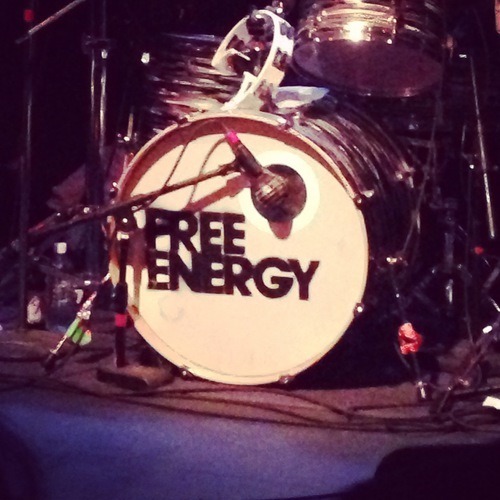


- HFS. Best show in a loooooooooooooooooong time. I cannot wait to see this band again. The lead guitarist rules, let’s just start with that.
- Drummer wearing Titus Andronicus shirt has a startling resemblance to Blake from Workaholics.
- Number of Justin Bieber haircuts on stage: 1
- So many guitar solos. I did air guitar like 5000 times.
- Fret whiskers: that thing where you don’t trim the end of your guitar strings at the tuners.
- Just before the encore, the bar wasn’t closed! How awesome is that??
- Song after song after song, they just kept getting better. It was an amazing set.
- Alright folks, good luck topping this band this year. They set the bar pretty high.
In Conclusion
I give this show 94 stars. One star for Tractor Tavern. One star for The West and their infectious dance music. One star for the Boat singer who climbed on drums during a song. Twenty stars each for the lead guitarist and lead singer of Free Energy. Fifty stars for a very well crafted set list. One star for keeping a smile on my face for the entire set.
xoxo A
Kevin Starr describes the debate over allowing California into the Union, as it hung on the issue of slavery, or the South’s “peculiar institution” (p73). This is a belittling way to describe slavery, as if it were peculiar to the South, or particular to the antebellum period. It is representative of a certain misconception that many continue to perpetuate, as described on the website for the modern non-profit anti-slavery group, TraffickFree.org:
“ there are more slaves now than ever before in human history - approximately 27 million around the world
(….)
“17,500 slaves are brought into the United States every year “
So in the least it is a poor choice of words on Starr’s part, but also seems to contradict information he admits to later in the chapter, albeit in a mitigated vocabulary:
“immigrants who arrived at Sutter’s Fort (…) contracted from him the labor (and sometimes it has been alleged, the sexual services) of Native Americans indentured to Sutter or otherwise under his control, many of them little better off than slaves.” [pp77-78]
I must wonder what he qualifies in their situation as being ‘not quite as bad as’ slavery-slavery.
Like the seats of a teeter-totter, the surge of outsiders into California during the Gold Rush brought with it a commensurate decline in the lives and cultures of Native Americans. In many ways this pattern copies the earlier interaction of Spanish colonials and Native’s in the first days of settlement and the introduction of the mission-system. For this reason, when Starr waxes poetically about the Gold Rush “…reprising the dreams of the Spanish conquistadores, explorers, and maritime adventurers…” or that “the quest for El Dorado was now being Americanized with its psychological and mythic hold as powerful as ever” [p.81], he belies the real pattern of greed and exploitation that was recurring.
With that being said, the Gold Rush must still be credited with bringing an unprecedented cultural diversity to the State, even at the expense of the indigenous cultural diversity that was supplanted in the process. This diversity would at least provide grounds for a cosmopolitan conversation on race and cultural diversity, even if it was rather immature in its early days. Truly people came from all over the world and became a part of this new conversation.
My Great, Great grandmother (left) and her best friend at the time in rural Hines, Oregon. taken sometime during the mid 1920’s. via r/TheWayWeWere by @luxury_death
I love this photo. I’m assuming it is a “Real Photo Postcard” from the era. the original was posted on Reddit by user @luxury_death.
This is the earliest photo I have ever seen of what would become The Edward Hines Lumber Mill. This photo would actually predate the City of Hines and would have been taken sometime after May of 1927.
That is when The Herrick Lumber Company broke ground on the lumber mill at this location according The Gate City Journal of Nyssa, Oregon on May 13, 1927.


Herrick Lumber Company purchased the Bear Valley Timber Sale in April of 1923. They brought the rail line into Burns and on to the South where they planned on establishing a mill. By 1927 Herrick Lumber had nearly finished the line to Seneca in Grant County and had a partially finished mill along with a power house and mill pond. Financial difficulties had caused them to make slow progress on the project and as a result they missed several deadlines and deadline extentions. In December of 1927 the Foresest Service cancelled the contract with Herrick Lumber. The contract was given to Edward Hines Lumber and in October of 1928 Fred Herrick sold his mill site and the railroad to Hines Lumber Company of Chicago at a consideralble loss.
Visit the following TrainWeb article for an in depth history of The Malheur Railroad and the Fred Herrick Lumber Company.
The City of Hines wasn’t incorporporated until May of 1930 according to Oregon Encyclopedia’s article Hines and the Edward Hines Lumber CompanybyMarjorie Thelen.
Post link









